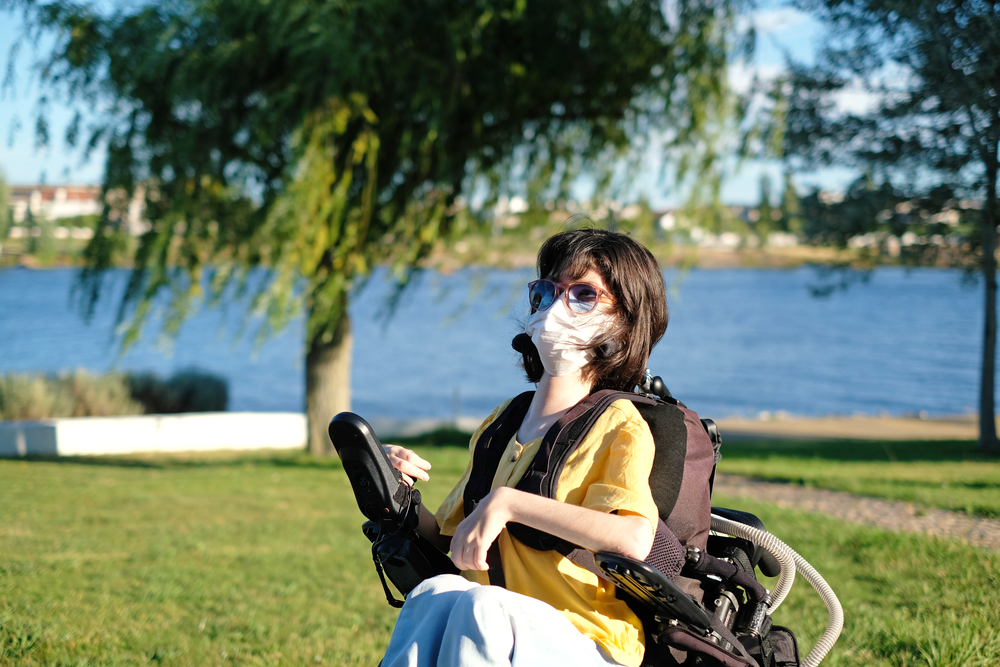Fukuyama congenital muscular dystrophy (FCMD) is the second most common form of childhood muscular dystrophy in Japan. The disease manifests itself in the form of a severe neuromuscular disorder.
One form of FCMD is caused by a genetic abnormality in the fukutin (FKTN) gene. The genetic anomaly blocks the chemical glycosylation of a biologically important protein. Using RNA interference, Japanese researchers restored the normal biological function of FKTN in patient-derived cells, offering hope for therapy.
Muscular dystrophy is a debilitating disease that causes progressive weakening and loss of muscles. Fukuyama congenital muscular dystrophy (FCMD), the second most common form of childhood muscular dystrophy in Japan, is a severe neuromuscular disorder characterized by generalized muscle weakness, decreased muscle tone, eye abnormalities, brain malformation, cardiomyopathy, epilepsy, and seizures associated with intellectual disability.
Overcoming defect
Researchers in Japan led by Mariko Taniguchi-Ikeda, an associate professor in the Department of Clinical Genetics at Fujita Health University Hospital, were recently able to overcome this defect in the FKTN gene and restore its normal biological function.
Using the experimental technique called exon skipping by antisense oligonucleotides the team corrected a mistake in the FKTN gene that blocks the chemical glycosylation of a biologically important protein. To this end, the team designed specific antisense oligonucleotides—small pieces of DNA or RNA that can bind to specific RNA molecules. The researchers then conducted experiments on patient-derived cells using these antisense oligonucleotides to validate their hypothesis.
Taniguchi-Ikeda said: “I have seen patients with FCMD for more than 20 years. The goal of our research was to find a cure for this intractable disease. FCMD is the second most frequent type of childhood muscular dystrophy in the Japanese population. Our previous studies show that patients who carry retrotransposal insertion can be treated by introducing antisense oligonucleotides. Clinical trials are currently under way. However, no therapeutic methods are available for patients carrying a deep-intronic heterozygous variant. Our findings suggest that exon skipping by antisense oligonucleotides as a treatment for patients with the deep-intronic variant has tremendous potential.”
Structural stability
The basic premise of the research is based on a physiological mechanism involving FKTN. The FKTN gene is responsible for the production of “ribitol-phosphate transferase” – an enzyme that chemically transfers a glycosyl group to alpha-dystroglycan (α-DG). α-DG is a key protein present in the cytoskeleton, a large network of protein filaments and tubules that gives shape and coherence to living cells.
The genetic abnormality in the FKTN gene prevents it from expressing a fully functional form of ribitol-phosphate transferase. This reduced functionality, in turn, blocks a critical process in the biological relay—the glycosylation of α-DG. Incidentally, glycosylation, or the attachment of sugar molecules to non-sugar moieties like lipids and proteins, such as α-DG in this case, is important to ensure the structural stability as well as functionality of these moieties.
The findings, which have been published in the journal Human Molecular Genetics, have immediate implications, given the fact that the specifically designed antisense oligonucleotides, when introduced into patient-derived cells via RNAi, were able to skip the affected region of the gene, thus restoring normal production of the FKTN protein and subsequent glycosylation of α-DG.
Paramount significance
Radical therapies for certain types of neuromuscular disorders have evolved in recent years. Although no effective therapies were available until recently, several therapeutic approaches have advanced to the clinical stage in the past few years. More specifically, pharmacologic RNA splicing modulation aimed at modifying RNA processing and function has progressed.
Co-author Hiroki Kurahashi, a professor at Fujita Health University, added: “Patients with FCMD who carry the abnormal FKTN gene produce non-glycosylated α-DG, which makes them bedridden right from adolescence. They also require respiratory support, a feeding tube, and lifetime care from their families. Our initial experiments are therefore of paramount significance.”
Encouraged by their in vitro findings, the research team is now proposing translational work by setting up large-scale clinical trials involving patients with Fukuyama congenital muscular dystrophy. Lead author Sarantuya Enkhjargal, a Ph.D. student at Fujita Health University Hospital, said: “The US Food and Drug Administration has approved eight antisense oligonucleotides for the treatment of several diseases. Our findings are promising at the in vitro level. Further studies on the in vivo efficacy and safety in animal models will be needed before this approach is eventually used in clinical trials, however.”
Partnering 2030: The Biotech Perspective 2023






